The naked truth about a Japanese onsen experience
The first thing to consider about the onsen is whether being nude in public bothers you. This experience is all about purity, and the rules are non-negotiable.
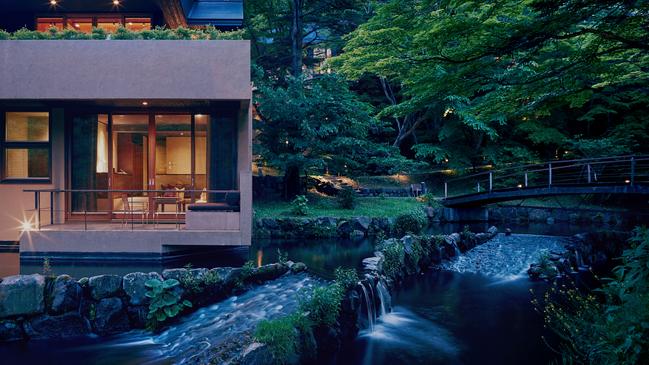
The first thing to consider about the Japanese onsen is whether or not being naked in public bothers you. I’m not referring to streaking or suddenly ripping off your clothing and twirling your underwear like a stripper. I mean a calculated nudity of the kind essential in a Japanese public bath-house with just a washcloth the size of a hanky to cover up the private bits. It’s enough to turn off many visitors, especially when regular hotel and resort spas have blossomed with ethereal wellness saunas and all manner of steam and heat chambers where modesty is taken seriously.
It’s an issue that bothers me on a recent visit to Japan, where I lived in my late teens and early twenties. My body is botched with scars (hello, caesarean sections) and one breast is smaller than the other, thanks to life-saving surgery many moons ago. One-piece elasticised swimsuits are my go-to bathing choices. But to wear clothing is not permitted when bathing at an onsen and, even if it were, would bring undue attention to any such unduly modest interloper. The onsen experience is all about purity, not frolicking about in costumes salt-flecked with memories of a lifetime of beach holidays.
Then there are the rules and regulations. Top of the banned list are tattoos, thus discouraging crafty yakuza gangsters. Tattoo stickers are sometimes permitted, although surely destined to peel off quick-smart in the heat and steam. At westernised hotels in Japan’s big cities, the public bathing rules are particularly detailed, lest foreigners engage in weird practices not covered by the main manifesto, such as fully submerging head and body.
There are two affiliated onsen on my itinerary hitlist, one atop a high-rise urban ryokan-style hotel and the other at a hot springs resort in northwest Japan. The first is at HOSHINOYA Tokyo, on a rooftop in the central Otemachi district. Yukata cotton gowns and rubber slippers have already been provided in my room by a maid’s unseen hands so I shuffle along a hushed corridor, passing similarly attired guests, and emerge into the cold, starry night, the neon lights of Tokyo laid out below and beyond.

It’s late winter and dainty snowflakes are swirling. I take a deep breath, retreat to fold clothing and footwear into a locker, and then realise as I put my glasses into their case that I can’t see. I have an optical prescription swim mask but didn’t pack it. Uh-oh. I fake my way in the ablutions area, where the matter of pre-dip washing is important, as germs should not be transferred to the pure water in the pools and nor must body grime. The process is concentrated, even if my vision is not; one fellow guest is wearing nifty, but possibly unauthorised, swim goggles.
As I feel my way through a cave-like tunnel between the black-walled communal baths, I can see shadowy shapes and a star-strewn sky shining through a double-storey skylight. The hot mineral-rich water, dense in iodine, sodium and chloride, is drawn from an ancient seabed spring 1500m below the ground via some sort of seemingly impossible alchemy. Iodine is a relatively rare component of such water and apparently a blessing for those suffering chronic muscle soreness, joint pain and poor circulation. No mention of it being a balm for failing eyesight, sadly.
I rove between the pools and every knotted muscle seems to liquefy. The silky water is blissful. I stay so long there’s a chance my skin will resemble a wrinkled prune. We sole bathers pay no attention to each other but I hear soft conversations in German, Mandarin, Italian and Spanish between surrounding groups. Against the fragile crispness of the air, it’s an almost conspiratorial soundtrack.

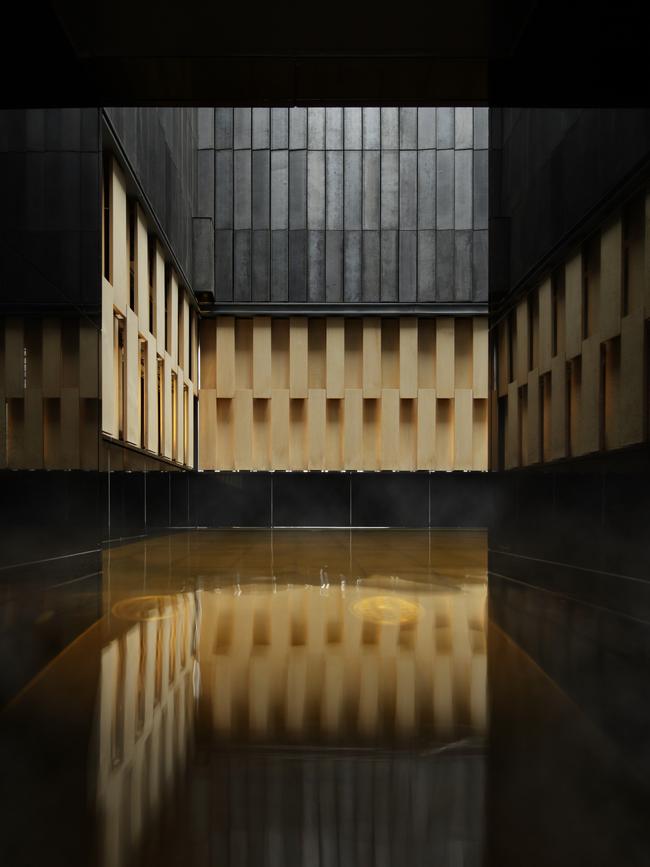
The second onsen is at sister property HOSHINOYA Karuizawa in the popular ski hub of Nagano prefecture. Here, the hot springs date back to 1915 and water flows from the source. The stated promise is irresistible for bathers: “The soft, thick water is said to wash away any impurities, and a thin layer of salt will retain on the body as you leave the tub, keeping your skin moisturised. It is known as the hot spring of beauty.” Who wouldn’t want a dip?
The estate’s timber chalets loom against a grey-washed sky, and the snow is deep and crisp during my late winter visit. Early morning and twilight, before and after touring, are when guests ramble to the indoor-outdoor onsen for “a relaxing time in a meditation bath”. The al fresco option is a dual space, based on “the transition from light to dark” that blocks stimuli from the outside world. “One’s senses are sharpened and can enter relaxation through meditation.”

I am unconvinced as I do my best drifting impersonations, but later I sleep long and very deeply. Meantime, my hair is flecked with snowflakes as I shuffle back to my chalet, where the temptation to compose an ephemeral haiku seems irresistible. More practical, however, is the prospect of a spa treatment, although better to be booked at a separate time. The main takeaway after the onsen dip, I have decided, is the tacit permission to immediately lie down for a virtuous nap.
No matter where you travel through the islands of Japan, an onsen experience awaits. And none of this is reserved just for humans. In the north of Nagano, Jigokudani Yaen-Koen, widely known as Snow Monkey Park, is duly renowned. The pink-faced snow macaques in Mt Takasaki Monkey Park at Beppu, on the southern island of Kyushu, also frolic in hot springs, attracting throngs of sightseers. I’m not entirely sure of their appreciation of onsen etiquette, however.
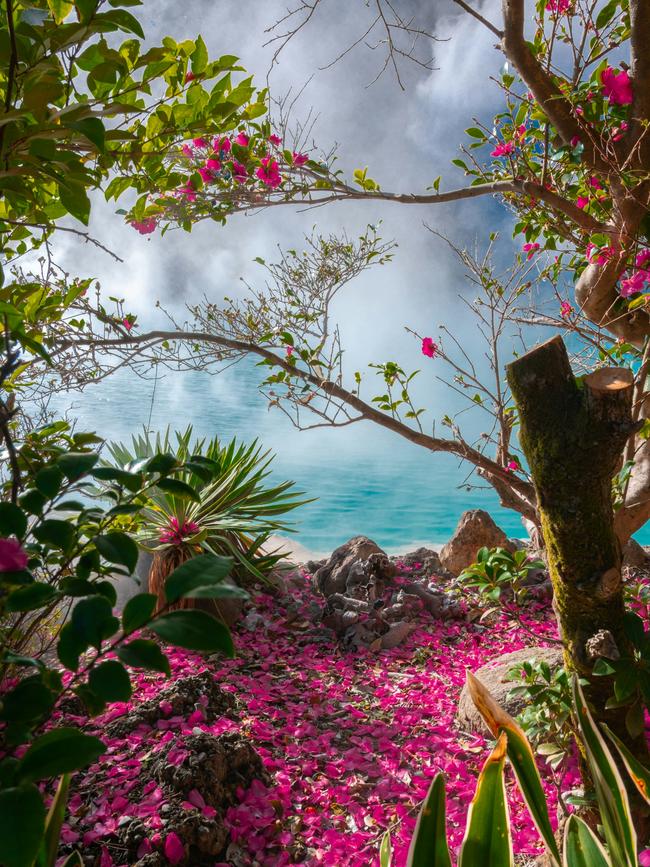
Beppu also has open-air baths, known as rotenburo, some of which are perched in landscapes overlooking the city, and steam baths called mushi-yu, the use of which could involve resting on a nest-like arrangement of Japanese herbs, as is the case at Yuya Ebisu ryokan. Up in Hokkaido, snow monkeys are also an attraction at Hakodate Botanical Gardens.
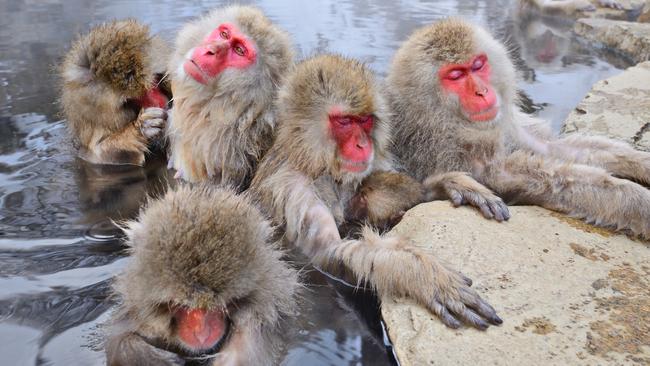
In Karuizawa, I discover there are also Asiatic black bears afoot and giant flying squirrels that glide between tall trees, their wings stretched like cloaks. These creatures don’t take the waters, as it were, but are further wintry attractions in a landscape of ineffable beauty.
And let’s not forget shinrin-yoku, or forest bathing, which is now an international trend. It involves a concerted amount of dedication and, despite the name, no immersion in water. This is meditation, concentrating solely on the powerful pull of nature, shucking all that urban stress and allowing yourself permission to stop still and just breathe.
Checklist
Getting there: Airlines including Qantas and ANA fly from Australian airports direct to Haneda, the closest international airport to Tokyo. It’s a quick monorail journey into the CBD. Karuizawa is about an hour by train northwest from entral Tokyo Station aboard the Shinkansen bullet train.

Stay and play: HOSHINOYA Karuizawa is an excellent onsen accommodation option relatively close to Tokyo, suitable for families and couples alike, and with all five-star facilities to hand. The scenery in Nagano prefecture turns to a white wonderland in winter, with more than 80 ski resorts, including runs suitable for beginners.

Etiquette: The majority of onsen in Japan are gender-segregated but local public bath-houses in regional areas may have mixed bathing. A small gauzy towel is usually provided at hotel and resort onsen to cover genitals while hopping in and out of the water, or to use draped over hair when bathing.
Further afield: HOSHINO Resorts offers hot springs at its Tokyo flagship high-rise hotel and regional resorts, including at Mt Banda in Fukushima prefecture, and across its KAI-branded “auberge” collection of 21 ryokan properties. Walk Japan has themed itineraries such as Onsen Gastronomy between Nagoya and Matsumoto, with an average 4km walking per day and accommodation at inns with easy access to hot springs.
hoshinoresorts.com; walkjapan.com


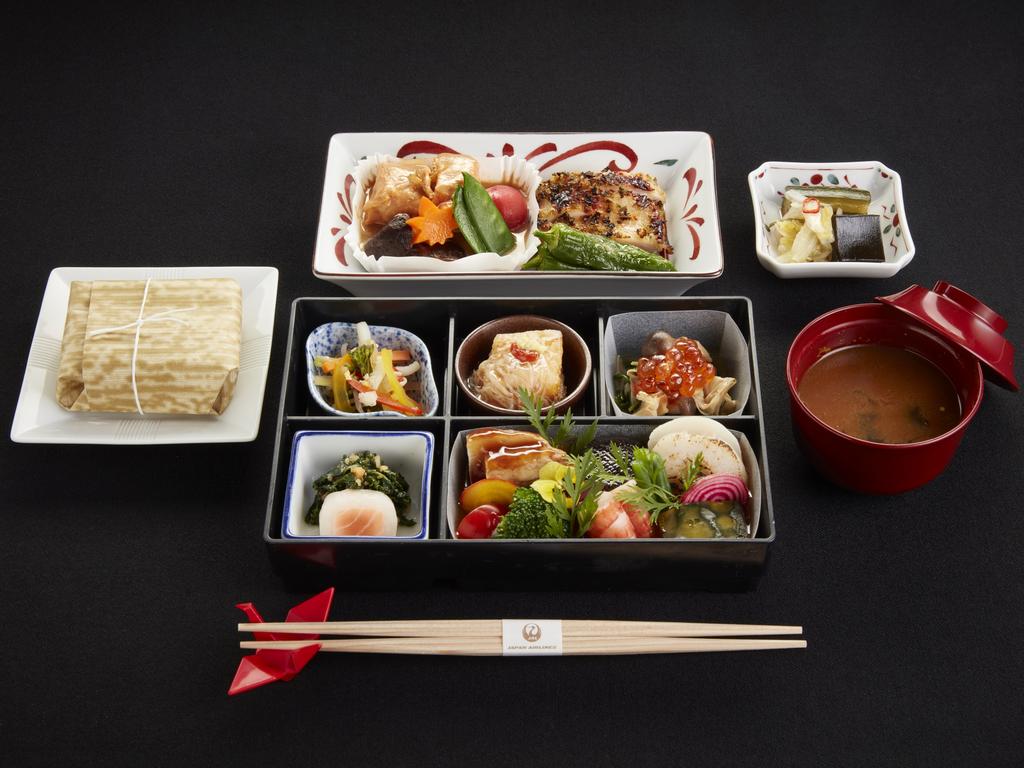
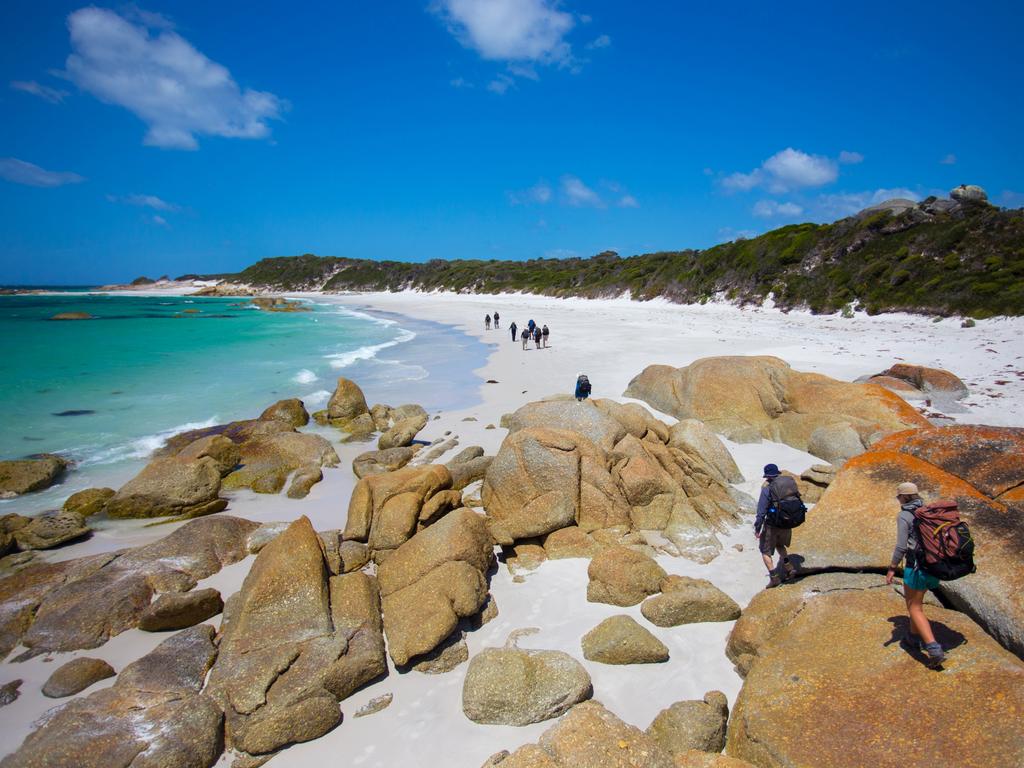
To join the conversation, please log in. Don't have an account? Register
Join the conversation, you are commenting as Logout